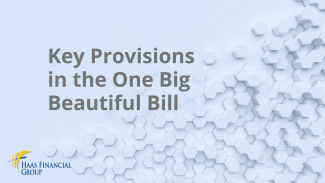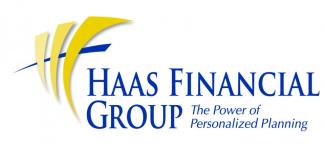
Key Provisions in the One Big Beautiful Bill
By now you are sure to have heard about the sweeping legislation dubbed the One Big Beautiful Bill. It was signed into law earlier this month. While the name sounds lighthearted, the content is anything but. With hundreds of provisions spanning taxes, healthcare, education, and retirement, this bill touches nearly every household in some way, shape or form which make the planning implications A LOT for us to digest.
Of course, not every detail matters to every person. So rather than overwhelm you with the fine print, we want to highlight some of the most far-reaching changes that could directly affect your finances, whether you’re retired, still working, raising a family, or thinking ahead to estate planning.
1. Bigger Standard Deductions, Especially for Seniors through 2028. One of the biggest headline changes is a boost to the standard deduction. For all taxpayers, the deduction increased slightly—but for seniors (age 65+), the bill adds an extra $6,000 per person. That means a retired couple could deduct an additional $12,000 from their taxable income. This provision is intended to help reduce the taxation of those collecting Social Security benefits. It’s important to note that this additional deduction for seniors is subject to income phaseouts starting at $75,000 for single filers and $150,000 for married filing jointly. So, there may need to be some careful planning to avoid losing out on some of the new tax deductions.
2. Deduction for Charitable Gifts While Still Utilizing the Standard Deduction. With the increased standard deductions in the original Tax Cut and Jobs Act in 2017, in order to deduct charitable contributions, you needed to itemize your deductions, which for many was a fairly high hurdle of approximately $30,000. Starting in 2026, single filers claiming the standard deduction can deduct $1,000 of cash gifts to charities, while joint filers can deduct up to $2,000.
3. New Eligible Expenses for 529 Plans - If you have kids or grandkids with a 529 education savings plan, there are some expanded rules that will help increase the usability of the funds. There is an expanded list of eligible expenses for use while the child is in grades K-12, along with an increase in the annual usage limit to $20,000 (up from $10,000). There is also language that broadens the definition of qualified expenses for Postsecondary education beyond just traditional college degree programs. This now includes tuition, fees, books and supplies for recognized postsecondary credential programs, workforce training and continuing education. As an example, for any aspiring Certified Financial Planners, you can use your 529 plan to cover the cost of obtaining the CFP credentials!
4. Higher Estate Tax Exemption - For those thinking about wealth transfer or legacy planning, the bill raises the federal estate tax exemption to $15 million per person, starting in 2026. For a married couple, that’s up to $30 million sheltered from federal estate taxes. While most families won’t cross that threshold, those who do now have more flexibility in passing wealth to the next generation.
5. Medicaid Cuts and New Requirements. This is one to watch closely, especially if your loved ones rely on Medicaid for long-term care, home health, or supplemental healthcare coverage. The bill includes over $1 trillion in cuts to Medicaid and imposes work requirements for able-bodied adults aged 19–64. It also adds stricter re-enrollment rules. While the intent is to reduce fraud and improve efficiency, these changes could make it harder for some to maintain coverage—especially those navigating health or caregiving challenges.
6. Increased SALT deduction through 2029 – For those that may have utilized itemized deductions in the past and/or live in an area with elevated state and local taxes, the so-called SALT deduction is being increased to $40,000 (up from the current $10,000 limit). The new provision is subject to income phaseouts starting at $500,000 of modified adjusted gross income (MAGI). Even when fully “phased out” based on your income, the deduction reverts back to the original $10,000 floor, not $0.
7. Increased Flexibility on timing of Gains from Sale of Qualified Farmland - This may not apply to many people but with our roots in Berks County, this could be an important provision for some families. The rule will allow the gain from a sale of qualified farmland to be spread over 4 annual installments (4 tax years) if the land is sold to a “qualified farmer” (i.e. not a developer).
8. Business Meals Exception for Fishing Operations – This is just to make sure you’re still paying attention and to illustrate the absurdity and specificity written into our tax code. A new exception was created for the 50% limitation on business meal deductions for meals provided on fishing vessels or at fish processing facilities located north of 50 degrees latitude and not in a metropolitan statistical area (i.e. Alaska). So, if that applies to you...now you know!
The takeaway, regardless of one's opinion on tax policy, is that the host of new deductions (and alterations to existing deductions on Schedule A) adds significant complexity to many households' tax pictures. Even though software can easily calculate the taxes owed each year, actually planning – particularly for future years – becomes exponentially harder as more deductions, qualifications, and phaseouts come into play. There's also significant uncertainty around how long many of these rules will be in effect and whether the provisions scheduled to sunset in 2028 will be extended further. If you're wondering how these changes may affect your personal financial plan, tax liability, or legacy planning strategy, we’re here to help. From updating income projections to revisiting estate documents, this is exactly the kind of shift that benefits from proactive planning.
Sources:
Ticket #T009526
Investment Advice offered through Great Valley Advisor Group, a Registered Investment Advisor. Great Valley Advisor Group and Haas Financial Investment Advice offered through Great Valley Advisor Group, a Registered Investment Advisor. Great Valley Advisor Group and Haas Financial Group are separate entities. This is not intended to be used as tax or legal advice. Please consult a tax or legal professional for specific information and advice. are separate entities. This is not intended to be used as tax or legal advice. Please consult a tax or legal professional for specific information and advice.

